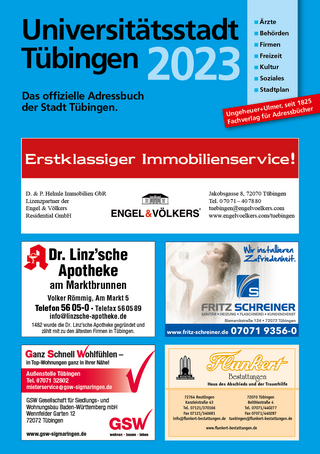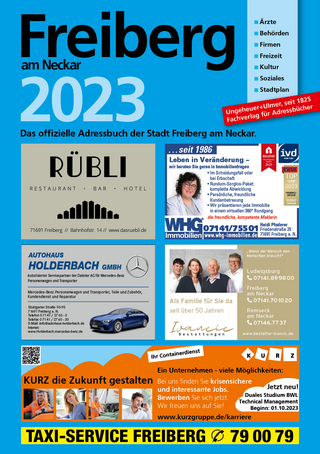
The Communication Age
SAGE Publications Inc (Verlag)
978-1-5063-6965-5 (ISBN)
- Keine Verlagsinformationen verfügbar
- Artikel merken
Combining popular media examples with the latest research, The Communication Age shows how to apply foundational communication concepts, incorporating technology, media and speech communication. Covering the essentials of interpersonal, small group and public communication, the text includes `Communication Unplugged’ features with practical tips for communicating without the assistance of technology when needed. The new edition includes:
New animation videos illustrating key concepts in each chapter to help students understand the fundamentals of communication.
The re-designed "What You’ve Learned" end-of-chapter pedagogy organizing key terms, review questions, and critical thinking questions according to learning objective
Updated feature boxes incorporating current events and communication issues into the revised text.
Updated references throughout keeping readers up-to-date with the latest scholarship in the field and its application to everyday life
Autumn P. Edwards (PhD, Ohio University) is an associate professor in the School of Communication at Western Michigan University. Her scholarly interests include interpersonal communication, communication and technology, and communication theory. Her research focuses on the influence of individuals’ personally held theories of communication on aspects of community life, relational health, and personal well-being. Recent published work appears in journals such as the Journal of Family Communication, Communication Studies, Health Communication, Communication Research Reports, Communication Education, and The Journal of Computer Mediated Communication and in several edited books. She is the recipient of an Outstanding Teaching Award and the Kim Giffin Research Award from the University of Kansas and was designated a Claude Kantner Research Fellow at Ohio University. Chad Edwards (PhD, University of Kansas) is an associate professor of communication in the School of Communication at Western Michigan University. Previously, he was a Hartel Fellow at Marietta College. Chad’s research interests include communication in the teacher-student relationship, human-robot interaction, and transformative communication practices. Recent publications include articles in Communication Education, Communication Research Reports, Basic Communication Course Annual, Journal on Excellence in College Teaching, and other communication and education studies journals. He serves on numerous editorial boards including that of Communication Education. He has held offices at both national and regional communication conferences and is currently the first vice president of the Central States Communication Association. In 2009, Chad received the Distinguished Teaching Award from Western Michigan University (the highest teaching award given by WMU). He also has been awarded teaching awards from the College of Arts and Sciences at Western Michigan University, the University of Kansas, and Texas Tech University. Additionally, Chad has received several top paper awards for his research. Shawn T. Wahl (PhD, University of Nebraska, Lincoln) is a professor of communication and head of the Department of Communication in the School of Communication Studies at Missouri State University (MSU). Prior to MSU, he served as head of the Department of Communication, Mass Media, & Theatre at Angelo State University and as the director of graduate studies at Texas A&M University, Corpus Christi. He is coauthor of Nonverbal Communication for a Lifetime, Business and Professional Communication: KEYS for Workplace Excellence, Persuasion in Your Life, Communication and Culture In Your Life, and Public Relations Principles: Strategies for Professional Success. Shawn has published articles in Communication Education, Communication Research Reports, Communication Teacher, Journal of Family Communication, and Basic Communication Course Annual. Shawn was a faculty participant in the National Communication Association Learning Outcomes in Communication project and is the 2016 President of the Central States Communication Association. In addition, Shawn has worked across the nation as a corporate trainer, communication consultant, and leadership coach in a variety of industries. Outside of his professional work, he enjoys spending time with his family and two Chinese pugs (Jake and Bentley). Scott A. Myers (PhD, Kent State University) is a professor and Peggy Rardin McConnell Chair in the Department of Communication Studies at West Virginia University (WVU) where he teaches courses in instructional communication, organizational communication, and communication pedagogy. His research interests center primarily on the student-instructor relationship in the college classroom and the adult sibling relationship, with his research appearing in outlets such as Communication Education, Journal of Family Communication, Communication Research Reports, and Communication Quarterly, among others. At WVU, he was recognized by the Eberly College of Arts and Sciences as a Woodburn Professor (2005–2007) and as an Outstanding Teacher in 2010. He is a former editor of Communication Teacher, a former executive director of the Central States Communication Association (CSCA), and a past president of CSCA.
PREFACE
ACKNOWLEDGMENTS
ABOUT THE AUTHORS
1. Communication in the 21st Century
The Communication Age
Benefits of Studying Communication
What Is Communication?
Contexts of Communication
Communication Metaphors
Communication Competence
Communication Ethics
Connecting and Engaging in Communication
2. Perception, Self, and Communication
Perception and Communication
Self and Communication
Perception, Self, Communication, and Convergence
3. Verbal Communication
Verbal versus Nonverbal Communication
The Building Blocks of Language
Functions of Verbal Messages
Production and Interpretation of Verbal Messages
Verbal Communication and Convergence
4. Nonverbal Communication
Why Does Nonverbal Communication Matter?
Functions of Nonverbal Communication
Codes of Nonverbal Communication
Improving Your Nonverbal Communication Skills
Nonverbal Communication and Convergence
5. Listening
Hearing versus Listening
Listening Problems
Benefits of Being a Good Listener
Types of Listening
Becoming a Better Listener
Listening and Convergence
6. Communication, Culture, and Diversity
Culture and Diversity Defined
Cultural Awareness
Cultural Competence
Examples of Diversity across Communication Contexts
Barriers to Communication, Culture, and Diversity
Communication, Culture, Diversity, and Convergence
7. Interpersonal Communication
Forming Relationships
Models of Relationship Formation
Communication of Interpersonal Relationships
Interpersonal Communication and Convergence
8. Small Group and Team Communication
What Is Small Group Communication?
Small Group Development
Small Group Member Roles and Leadership
Small Group Conflict
Small Group and Team Communication and Convergence
9. Workplace and Organizational Communication
What Is Workplace Communication?
Workplace Culture
Workplace Socialization
Workplace Dissent
Workplace Relationships
Workplace and Organizational Communication and Convergence
10. Communication and New Media
Communication Traditions and Technology
New Media: Connecting and Engaging
Characteristics of New Media Theory
Presenting Your Online Identity
New Media as Your Community
New Media and Convergence
11. Selecting and Researching Your Topic and Knowing Your Audience
What Is the Purpose and Type of Your Presentation?
How Do I Choose a Topic?
Audience Analysis
Plagiarism
Building Credibility with Research
Finding Information
The Basics of Your Presentation
Selecting and Researching Your Topic and Knowing Your Audience and Convergence
12. Organizing Your Presentation
Telling a Story
Organizational Patterns
Introducing the Topic
Body
Conclusion
Transitions
Outlines
Time Considerations
Organizing Your Presentation and Convergence
13. Delivering Your Presentations
How to Reduce Your Anxiety and Fear over Presentations
Methods of Delivery
Effective Delivery Skills
Multimedia Presentational Aids
Delivery in Presentations and Convergence
14. Informative Presentations
The Difference between Informative and Persuasive Presentations
Relating Your Topic to the Audience
Types of Informative Presentations
Strategies for Informative Presentations
Samples of Informative Presentations
Informative Presentations and Convergence
15. Persuasive Presentations
Types of Persuasive Claims
Crafting Persuasive Arguments
Strategies to Persuade
Organizing Your Persuasive Presentation
Samples of Persuasive Presentations
Persuasive Presentations and Convergence
Appendix: Interviewing in the Communication Age
Basics of Interviewing
Types of Questions
Structure of the Interview
The Interview Environment
Types of Interviews
Interviewing and Convergence
GLOSSARY
REFERENCES
INDEX
| Erscheinungsdatum | 10.01.2019 |
|---|---|
| Verlagsort | Thousand Oaks |
| Sprache | englisch |
| Maße | 203 x 254 mm |
| Gewicht | 740 g |
| Themenwelt | Sozialwissenschaften ► Kommunikation / Medien ► Allgemeines / Lexika |
| Sozialwissenschaften ► Kommunikation / Medien ► Kommunikationswissenschaft | |
| ISBN-10 | 1-5063-6965-0 / 1506369650 |
| ISBN-13 | 978-1-5063-6965-5 / 9781506369655 |
| Zustand | Neuware |
| Haben Sie eine Frage zum Produkt? |
aus dem Bereich


